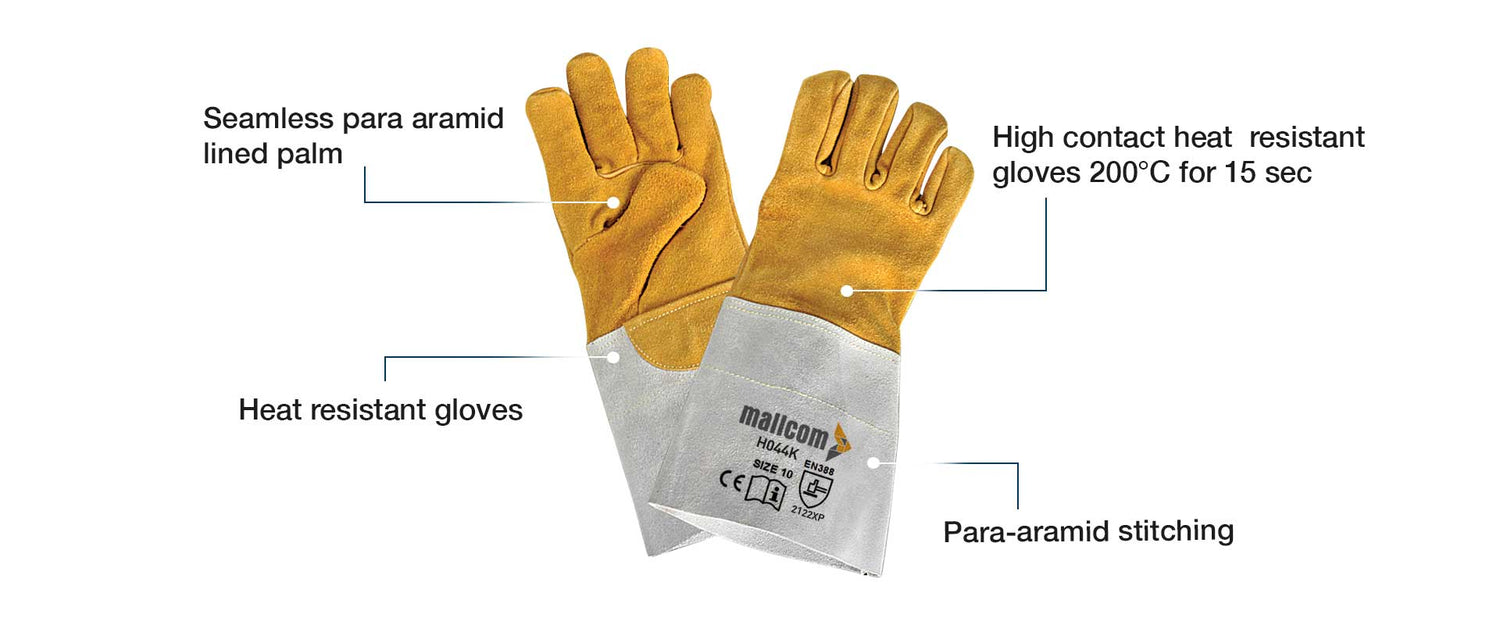H044K
Share
HEAT RESISTANT WELDER GLOVES
- Heat resistant glove
- Yellow dyed split welder glove
- Split leather cuff 15 cm cuff length
- Seamless para aramid lined palm
- Para-aramid stitching on the glove
- High contact heat resistant glove (200 degrees C for 15 sec)
ABRASION
DEXTERITY
SPARKS
FLAME
HEAT
RESIST CONTACT HEAT UPTO 100 *C FOR 15 SECONDS
EN 388:2016+A1:2018
EN 407:2020
EN 1277 2001+A1:2005
RESIST 100 *C CONTACT HEAT FOR 15 SECONDS
Delivery & Services

Easy Return
with our 15 days return poicy
Regular price
Rs. 0
Sale price
Rs. 0
Regular price
Tax included.
Shipping calculated at checkout.







ABOUT THE DESIGN

USEFUL IN THESE INDUSTRIES
AUTOMOBILE
IRON & STEEL
METTULARGY
REPAIRS & MAINTANENCE

Product Features
ABOUT THE DESIGN

USEFUL IN THESE INDUSTRIES
AUTOMOBILE
IRON & STEEL
METTULARGY
REPAIRS & MAINTANENCE
Product Details





































